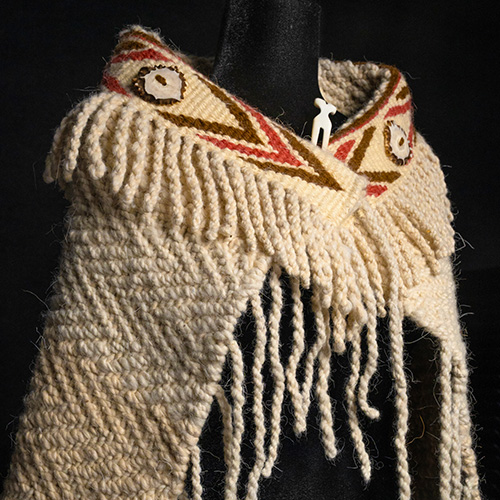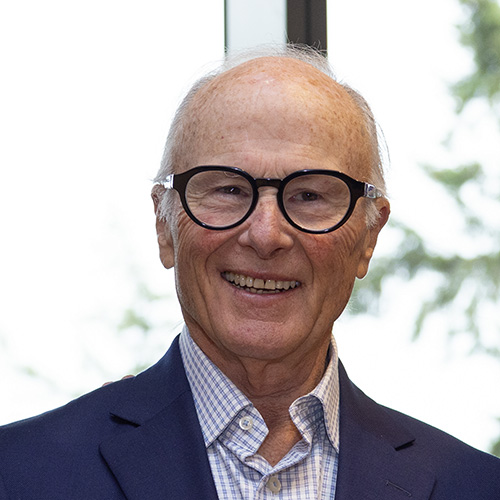When Ballet du Grand Théâtre de Genève performed at Meany Hall in April, students in ARTS 250: Inquiry and Discovery in the Arts were eager to attend. They had already met privately with the dance company’s artistic director and ballet master, who spoke about their creative process. They had heard from the pianist who would be accompanying the performances, and toured the venue with Meany Hall’s technical staff. Now they would see all the pieces come together on stage.
The rare behind-the-scenes access is a special feature of ARTS 250, an interdisciplinary arts course offered by Michelle Witt, executive director of Meany Hall and artistic director of UW World Series (UWWS). The course, offered for the first time this spring, grew out of discussions between Betsy Cooper, divisional dean for the arts in the College of Arts and Sciences, and the directors of the College's arts units.
“The core of this class is exploring the artist’s creative research process,” says Witt. “Why do artists choose a specific medium? What ideas do they hope to xpress? How does one overcome self-limitations? What are methodologies for inquiry-based creativity? We discuss the craft and rigor involved in creating art, whether it be choreography or music or other art forms.”

Those discussions are enhanced by students’ attendance at UWWS and other performances and exhibitions during the quarter. (UWWS presents international artists through four performing arts series at Meany Hall.) For many students—with majors ranging from business to mathematics to sociology to biology—Ballet du Grand Théâtre de Genève was the first live dance performance they had ever attended. For some, it was their first experience with live performance of any kind.
Witt offers students a list of questions to consider during performances but also cautions them not to overanalyze. “Movement is an immediate and kinetic experience,” she says, offering dance as an example. “A choreographer has chosen to communicate in the very specific and complex language of dance. Part of what we’ve talked about in class is how to let go of trying to analyze movement in purely intellectual terms and to become able to receive it in the language in which it was meant to be understood.”
We believe that this will help students tap into a skill set they can use over and over again, whether in biology or physics or linguistics or whatever field they choose. We all need creativity to thrive and to flourish.
That said, Witt still requires an essay following each performance, asking students to reflect on the experience. “I’m most interested in their personal response to the performances,” says Witt. “What is the strongest impression they have? What moved them? What confused them? Does the work succeed in their opinion? If so, why? If not, why not?”
As director of UWWS since 2011, and in leadership roles with performing arts programs at Stanford University and UC-Santa Cruz before that, Witt has spent plenty of time pondering how audiences experience live performances. She taught a course similar to ARTS 250 at UC-Santa Cruz, inspired by the visiting artists she met through her work there. “I saw a fantastic opportunity for students to be able to enter into dialogue and to experience the work of leading international artists,” she says. “I wanted to leverage the opportunity for students to directly experience their creative processes and performances.”
At the UW, the creative innovators who visit the class include renowned artists performing through UWWS as well as the UW's own world-class faculty. Many guests are scheduled well in advance, but Witt also embraces serendipity. The artistic director of Ballet du Grand Théâtre de Genève was not on the class schedule; Witt was backstage with him and informally asked if he’d be willing to speak to her students. “He said ‘yes’ on the spot,” she recalls. “That’s the nature of this class—very flexible and fluid depending on what time and resources the artists have when they are here.”

Witt views her role as guide or facilitator for the course, with the guest artists serving as the primary sources of inspiration. She encourages them to talk about the rigors of the artistic process—a specific and demanding form of research—by delving into how they work, what motivates them, what challenges or limits them, and how they overcome obstacles. She also assigns readings, such as choreographer Twyla Tharp’s The Creative Habit, to further demystify the creative process.
“The guest artists who come to class are experts in the creative process,” says Witt. “It is their life’s work to create. My job is to frame conversations and arts experiences as primary 'texts', to provide as many connection points for students to individual artists as possible, and to give them unbiased access to the work itself.”
Beyond guest lectures and attendance at performances, Witt wants students to experience the creative process firsthand. To this end, she is requiring each student to create an original work from concept through execution, and having them document the research involved. A series of exercises and small group discussions will guide students through the process.
“There are rigorous steps that most artists go through when they create,” says Witt. “They also must address their fears, their limitations, their distractions, and self-censorship to access something that is universal. The students have heard about this from visiting artists, and now they get to experience it themselves.”
It’s too early to predict how students will respond to this hands-on assignment, but Witt hopes that the impact will be long-lasting.
“We believe that this will help students tap into a skill set they can use over and over again, whether in biology or physics or linguistics or whatever field they choose,” says Witt. “We all need creativity to thrive and to flourish. By helping students understand and embrace the creative process, we are preparing them for leadership in our very complex and rapidly changing global environment. Embracing one’s creativity can also be a very gratifying personal journey, and I am hoping this will be just a starting point for an exploration that will last a lifetime.”
More Stories

A Healing Heart Returns
In February, the UW Symphony will perform a symphony that Coast Salish elder Vi Hilbert commissioned years ago to heal the world after the heartbreak of 9/11. The symphony was first performed by the Seattle Symphony in 2006.

Coast Salish Traditions are "Woven in Wool" at the Burke
A Burke Museum exhibit, co-curated by Coast Salish weavers and Burke curators, highlights the importance of weaving to Coast Salish communities.

A Transformative Gift for Arts & Sciences
To honor his wife and support the college that has meant so much to both of them, former Arts & Sciences dean John Simpson created the Katherine and John Simpson Endowed Deanship.